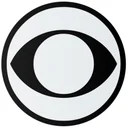How to Read Your Credit Card Statement
It's important to review it to know what you owe, when it's due, whether there are any errors and much more.

Many or all of the products on this page are from partners who compensate us when you click to or take an action on their website, but this does not influence our evaluations or ratings. Our opinions are our own.
Your credit card statement, while not the most exciting document you'll encounter, is important to understand. Ideally, you’re reviewing it each month, so you should know how to read your credit card statement and what you should to pay attention to.
Below is a summary of each of the basic statement sections, as well as an explanation of what you should focus on. While all credit card statements have the same basic information, the data may be presented in a different order and format depending on your card issuer.
Payment information
What this section tells you
Your statement balance: This is how much you owed at the end of the month-long billing period covered by the statement. Note that the statement balance might be different from your current balance. The current balance, also known as the "outstanding balance," is how much you owe right now. It takes into account purchases and other activity since the statement was generated.
The minimum payment due: Every card issuer uses its own formula for calculating minimum payments. It might just be a predetermined percentage of your entire bill, including interest and fees. It might be a percentage of the principal balance plus all accrued interest and fees. It might just be a flat amount like $25 or $40. Or if your balance is low enough, the minimum might be equal to your entire balance.
The due date: You must pay at least the minimum by this date. Otherwise, you may incur a late fee; if you're 30 days or more late, your credit scores may be affected.
A minimum payment warning: Included on some statements, this federally required disclosure shows you how long it would take to fully pay off your debt, and how much interest you would pay, if you were to make only minimum payments each month. That last part should serve as a monster motivating you to pay off your credit card debt. If you just stick to the minimums, you could easily end up paying more in interest than you charged in the first place.
Our advice: Credit card debt isn’t cheap, so aim to pay your statement balance in full every month. Doing so may not be possible right now, but it should be your ultimate goal. Paying in full every month also allows you to avoid paying interest because of the rules around credit card grace periods.
Account summary
What this section tells you
How your current balance was calculated.
This calculation begins with the previous month’s statement balance, subtracts recent payments and credits, and adds in purchases and other transactions, interest charges and fees. The account summary section also includes the card’s credit limit, available credit and cash advance limit.
Rewards summary
What this section tells you
The fun stuff! This section will be on your statement if you have a rewards credit card.
Where your rewards came from: Some statements will go into detail about which spending categories earned you points, miles or cash back and how much you earned. This is helpful for cards that earn higher rewards in specific categories, like dining out, groceries or transportation. It's also helpful for cards with rotating 5% cash-back categories.
Total rewards earned: The rewards you earned during this billing period.
Our advice: Understand how your credit card’s rewards program works. Redeeming and enjoying rewards doesn't matter for your credit scores, but who doesn’t love cash and potentially free plane tickets?
Information about your account
What this section tells you
Legal disclosures.
Calculation information.
Instructions on how to deal with errors.
Our advice: You don’t need to read this part of your statement every month, but go through it at least once to familiarize yourself with your credit card’s policies. You’ll learn useful information, like how your payments are applied or how your balance is calculated.
Payments and credits
What this section tells you
Payments: All of the payments you made that have been applied to your balance.
Credits: Any refunds credited to your account, like if you purchased something and returned it.
Our advice: Make sure refunds were processed and payments you made were applied to the balance. If you pay online — which you should — payments are typically applied to your balance within one to three days of clicking “submit” (although you will be credited with having made the payment on the day you submit it).
New charges
What this section tells you
All the purchases you made during the billing period. At a minimum, this will include the date, retailer and amount. Some issuers have more detailed statements, including the location of a retailer or a description of the type of retailer, like “grocery store” or “merchandise.” You’ll spend the majority of your statement review right here.
Our advice: Each month, go through your statement to verify you made each purchase. If there are unexplainable purchases listed, someone may have used your card to make fraudulent charges.
Interest charges
What this section tells you
Your total fees and interest year-to-date.
An interest charge calculation for this billing period.
A list of each balance type — purchases, cash advances and balance transfers — along with the applicable annual percentage rates. The balance is subject to these rates and the subsequent interest charges.
Our advice: Ideally, you won’t be accumulating interest, but check over this data to make sure it’s correct. Also, double check that you aren’t being charged any fees in error. You may have a card with an annual fee, which is fine, but you don’t want to accumulate late payment fees or the like.
Find the right credit card for you.
Whether you want to pay less interest or earn more rewards, the right card's out there. Just answer a few questions and we'll narrow the search for you.





